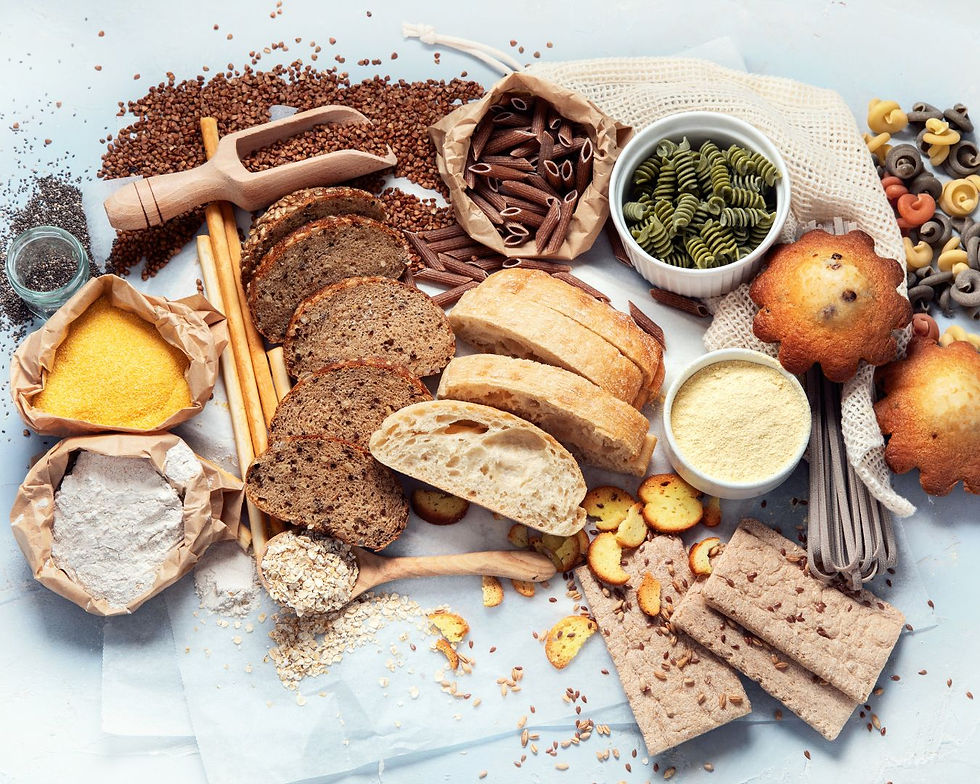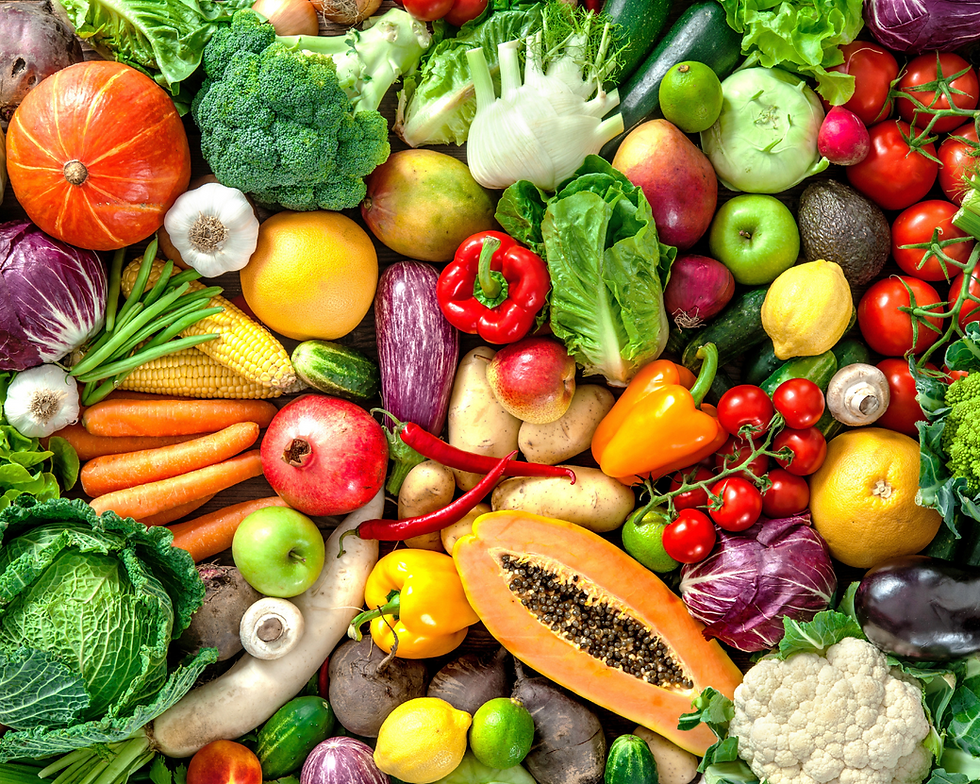The Starch Solution: Why a Starch-Based Diet is the Best Choice
- Lisa Meimann

- Feb 21
- 6 min read
Updated: Mar 27
The Starch Solution is a dietary approach developed by Dr. John McDougall.
It is based on scientific findings about the health benefits of a starch-based, low-fat, plant-based diet.
I have been studying the Starch Solution diet for many years and have also read The China Study. Although it took me some time to fully integrate this way of eating into my daily life, I am getting better at it and now eat hardly any unnatural fats or processed foods—and, of course, completely vegan.
Since I have been eating intuitively for many years, I have never had issues with my weight. You can find more about intuitive eating here (Stop dieting with these 5 tips & learn to eat intuitiv.
However, I have read many testimonials from people who have naturally lost weight following the Starch Solution.
In this article, you will learn why this diet is, according to Dr. McDougall’s research, the best choice for health and well-being. You will also find a list of allowed foods, a sample meal plan, and tips for getting started.

The Science Behind the Starch Solution
Dr. McDougall has spent decades researching the impact of diet on health.
His studies show that starchy foods such as potatoes, rice, and oats form the foundation of a healthy diet.
According to him, starch-based diets have been the foundation of many successful civilizations for thousands of years, including traditional diets in Asia (rice), Central and South America (corn, beans), and Africa (millet, sweet potatoes).
McDougall argues that a low-fat, plant-based diet can prevent or even reverse chronic diseases such as heart disease, type 2 diabetes, and obesity. Such a diet is rich in nutrients, fiber, and carbohydrates while being low in fat and cholesterol.
Allowed Foods
The Starch Solution focuses on natural, unprocessed plant-based foods. Here is a list of recommended foods:
Starchy Foods (Main Component of the Diet):
Potatoes (all kinds)
Sweet potatoes
Rice (brown, white, wild rice)
Oatmeal
Whole wheat pasta
Quinoa
Millet
Corn
Beans, lentils, chickpeas, peas
Whole grain bread, whole grain flatbread, tortillas
Vegetables:
Leafy greens (spinach, kale, chard)
Broccoli, cauliflower
Carrots, bell peppers, tomatoes
Mushrooms, zucchini, cucumbers

Fruits:
Apples, bananas, berries
Oranges, lemons, mangoes
Watermelon, pineapple, peaches
Others:
Plant-based milk alternatives (unsweetened)
Spices, vinegar, mustard
Nuts & seeds in very small amounts
Foods to Avoid:
Animal products (meat, dairy, eggs)
Highly processed foods
Refined oils and fats
Sugary beverages
Tips for Getting Started
Start with simple meals – Foods like potatoes, rice, and oats are easy to prepare and highly versatile. You can mix them with different spices, herbs, or vegetables to create variety in your meals.
Try cooking without oil – Instead of using oil for sautéing, try cooking vegetables in a bit of water or vegetable broth.
This not only reduces calories but also enhances the natural flavors of your ingredients.
If you miss the taste of oil, you can always drizzle a small amount of cold-pressed oil over your dish after cooking.

Starter Guide 5,99€ Reduce meat consumption gradually – You don’t have to cut out meat entirely right away. Start by skipping meat in a few meals per week and replacing it with plant-based alternatives.
Foods like beans, lentils, tofu, and chickpeas are excellent protein sources and can be easily incorporated into your favorite dishes.
Experiment with plant-based milk alternatives – Instead of dairy milk, try almond, oat, or soy milk.
Each type has its own unique flavor and works well in different contexts—oat milk is great in coffee, while almond milk adds a slightly sweet touch to cereal or smoothies.
Keep unhealthy snacks out of reach – Making healthier choices is easier when your kitchen is stocked with filling and nutritious foods.
Prepare snacks in advance, such as chopped fruits, veggie sticks with hummus, or homemade popcorn, to avoid reaching for processed snacks.
Plan your meals ahead – Having a meal plan in place helps you avoid resorting to fast food or unhealthy last-minute options.
Meal prepping larger portions (Tips for meal prep) in advance ensures that you always have a healthy meal ready to go.
Make sure you’re eating enough calories – Since a low-fat diet tends to be lower in calories, it's essential to eat enough starchy foods like potatoes, rice, and whole grains to stay full and maintain energy levels.
Make gradual changes – Transitioning to a new way of eating doesn’t have to happen overnight.
If you’re used to eating a lot of animal products, try phasing them out step by step rather than eliminating everything at once.
Small changes, like starting with one or two meat-free days per week or swapping butter for avocado, can make the process feel more manageable and sustainable.

Download my meal plan
Essential Meal Prep Tips for a Simple Plant-Based Diet
Cook Grains in Bulk
Grains like rice, quinoa, couscous, or bulgur are great meal bases.
Cooking them in advance saves time and ensures you always have a filling ingredient ready.
Store in airtight containers in the fridge for up to 4-5 days.
Reheat with a splash of water or vegetable broth to restore texture.
Use them in salads, stir-fries, soups, or bowls throughout the week.
Example: Cook quinoa on Sunday and use it in a salad on Monday, a stir-fry on Wednesday, and as a side dish on Friday.
Batch-Cook Protein Sources
Plant-based proteins like lentils, chickpeas, black beans, or tofu can be made ahead and used in different meals.
Cook a large batch of lentils or beans and store them in the fridge for up to 5 days.
Roast chickpeas or tofu in the oven with simple spices for easy additions to salads and bowls.
Freeze portions in airtight containers for longer storage.
💡 Example: Prepare a batch of spiced roasted chickpeas and add them to wraps, salads, or snack on them.
Prepare Versatile Vegetables
Preparing is always a good idea
Roast a big tray of vegetables (carrots, zucchini, bell peppers, sweet potatoes) to mix into different meals.
Chop fresh veggies (like cucumbers, bell peppers, and carrots) and store them in separate containers for quick access.
Use frozen vegetables for an easy, no-prep option—just heat and serve.
💡 Example: Use roasted sweet potatoes in a salad on Monday, in a wrap on Wednesday, and as a side dish on Friday.

Make Ready-to-Go Sauces & Dressings
Homemade sauces make meals more flavorful without extra effort.
Tahini dressing: Mix tahini, lemon juice, garlic, and water for a creamy dressing.
Hummus: Blend chickpeas, tahini, lemon, and garlic for a protein-packed spread.
Soy-ginger sauce: Soy sauce, ginger, garlic, and sesame oil for stir-fries.
💡 Example: Use hummus as a dip for veggies, a sandwich spread, or a sauce for grain bowls.
Prepare Simple Snacks
Having healthy snacks prepped prevents reaching for processed foods.
Cut up fruit (apples, berries, bananas) for easy grab-and-go options.
Make a snack box with nuts, dried fruit, or roasted chickpeas.
Keep rice cakes, whole grain crackers, or nut butter handy for quick energy.
💡 Example: Pre-pack small containers of almonds and dried fruit for easy snacks during busy days.
Use Meal Prepped Ingredients in Multiple Ways
To keep meals interesting, re-use the same ingredients in different ways.
Cook one batch of quinoa → Use it in a salad, a warm bowl, and a stir-fry.
Make one batch of roasted chickpeas → Add to wraps, salads, or eat as a snack.
Chop a variety of raw veggies → Use in sandwiches, stir-fries, or grain bowls.
💡 Example: Instead of eating the same meal every day, mix and match ingredients to create new combinations.
Store Food the Right Way
Store right is really important
Use glass containers to keep food fresh longer.
Store grains and proteins separately so you can mix them as needed.
Keep fresh herbs in water (like a bouquet) to maintain freshness.
Freeze portions of soups, grains, and sauces for emergency meals.
💡 Example: Store pre-cooked quinoa, lentils, and chopped veggies in separate containers to quickly assemble meals throughout the week.
Final Meal Prep Strategy: The "Mix & Match" Method
Instead of cooking full meals in advance, prep ingredients separately and assemble meals quickly.
Prepped Ingredients:
Grains: Cooked quinoa, rice, or couscous
Proteins: Roasted chickpeas, cooked lentils, or tofu
Veggies: Raw, roasted, or steamed
Sauces: Hummus, tahini dressing, soy-ginger sauce
How to Use:
Salad Bowl: Quinoa + chickpeas + raw veggies + tahini dressing
Wrap: Tortilla + hummus + roasted veggies + tofu
Stir-Fry: Rice + lentils + sautéed vegetables + soy-ginger sauce
Example: With just a few prepped ingredients, you can make different meals every day without extra cooking.
The Role of Fats in Nutrition
While the Starch Solution emphasizes a low-fat diet, it is important to note that fats play a crucial role, especially for women and hormonal balance.
Therefore, I approach fat intake intuitively.
Instead of using oils, I opt for whole food sources of healthy fats such as olives, nuts, avocados, and seeds.
With the Starch Solution, you are adopting a sustainable and healthy diet that is beneficial for both your health and the environment.
Give it a try and enjoy the benefits of a starch-based diet!
If you’d like more exchange and want to learn more about topics like Mindful Living, the Starch Solution, the Blue Zone Diet, and walking barefoot, I’d be happy if you join my newsletter (promise, no spam, and always personal).
Yours Lisa




Comments